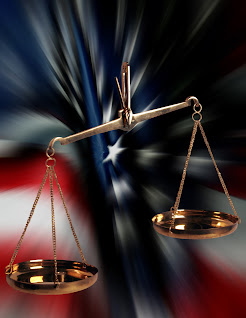Section 1981: Pretext & Discriminatory Remarks
Under Section 1981--and within the context of employment--may a plaintiff establish pretext by way of evidence of discriminatory remarks? Here’s my point of view (NOTE: please read our DISCLAIMER before proceeding).
MCDONNELL DOUGLAS ANALYSIS
This article will address the case in which only circumstantial evidence, as opposed to direct evidence is offered to prove discrimination. Accordingly, in order to evaluate claims of intentional discrimination under Section 1981, where intent itself is generally impossible to prove, courts apply a burden-shifting analysis (hereinafter, "McDonnell Douglas Analysis"). Lindsey v. SLT Los Angeles, LLC, 447 F.3d 1138, 1144 (9th Cir.2005) (referencing McDonnell Douglas Corp. v. Green, 411 U.S. 792, 802-03, 93 S.Ct. 1817, 36 L.Ed.2d 668 (1973); Patterson v. McLean Credit Union, 491 U.S. 164, 186, 109 S.Ct. 2363, 105 L.Ed.2d 132 (1989), superseded by statute on other grounds, Civil Rights Act of 1991, Pub.L. No. 102-166, 105 Stat. 1071).
Under the McDonnell Douglas Analysis--and within the context of a Section 1981 claim--if the plaintiff satisfies the initial burden of establishing a prima facie case of racial discrimination, the burden shifts to the defendant to prove it had a legitimate non-discriminatory reason for the adverse action. Id. If the defendant meets that burden, the plaintiff must prove that such a reason was merely a pretext for intentional discrimination. Id. (internal citation omitted).
The proof required to establish a prima facie case is "minimal and does not even need to rise to the level of a preponderance of the evidence." Id. at 1144-45 (internal citation omitted).
PROVING PRETEXT (SECTION 1981)
If the defendant meets its burden to produce a legitimate non-discriminatory reason, the Section 1981 plaintiff must persuade the jury that the defendant's stated reason was merely a pretext for race discrimination, or in some other way prove it is more likely than not that race motivated the employer. Texas Dept. of Community Affairs v. Burdine, 450 U.S. 248, 253 (1981).
EVIDENCE OF DISCRIMINATORY REMARKS: Evidence of discriminatory remarks may create an inference of discriminatory motive. See Warren v. City of Carlsbad, 58 F.3d 439, 443 (9th Cir.1995), cert. denied, 116 S.Ct. 1261 (1996); see also Lindahl v. Air France, 930 F.2d 1434, 1439 (9th Cir.1991).
To establish pretext, there must be a sufficient nexus between the alleged discriminatory remarks and the adverse employment decision. Dehorney v. Bank of America, 879 F.2d 459, 468 (9th Cir.1989). However, even if there is no nexus to the adverse employment decision, such that the remarks themselves are insufficient to withstand summary judgment, the remarks are still relevant evidence that, along with other evidence, may create a strong inference of intentional discrimination. Mangold v. California Pub. Util. Comm'n., 67 F.3d 1470, 1477 (9th Cir.1995).
Bigoted remarks by a member of senior management may tend to show discrimination, even if directed at someone other than the plaintiff. Metoyer v. Chassman, 504 F.3d 919, 937 (9th Cir.2007) (citing Cordova v. State Farm Ins. Cos., 124 F.3d 1145, 1149 (9th Cir.1997)). Furthermore, remarks by such a decisionmaker tend to show bias, even if several years old. Id. (referencing Mustafa v. Clark County School Dist., 157 F.3d 1169, 1179-80 (9th Cir. 1998)).
CONCLUSION
Thus, I believe that a Section-1981 plaintiff may establish pretext by way of evidence of discriminatory remarks, and such remarks may also be used to create a strong inference of intentional discrimination.
Learn More
If you would like to learn more, then consider contacting an experienced Washington State Employment Discrimination Attorney as soon as possible to discuss your case. Please note: the information contained in this article is not offered as legal advice and will not form an attorney-client relationship with either this author or Williams Law Group, PS; please see our DISCLAIMER.








